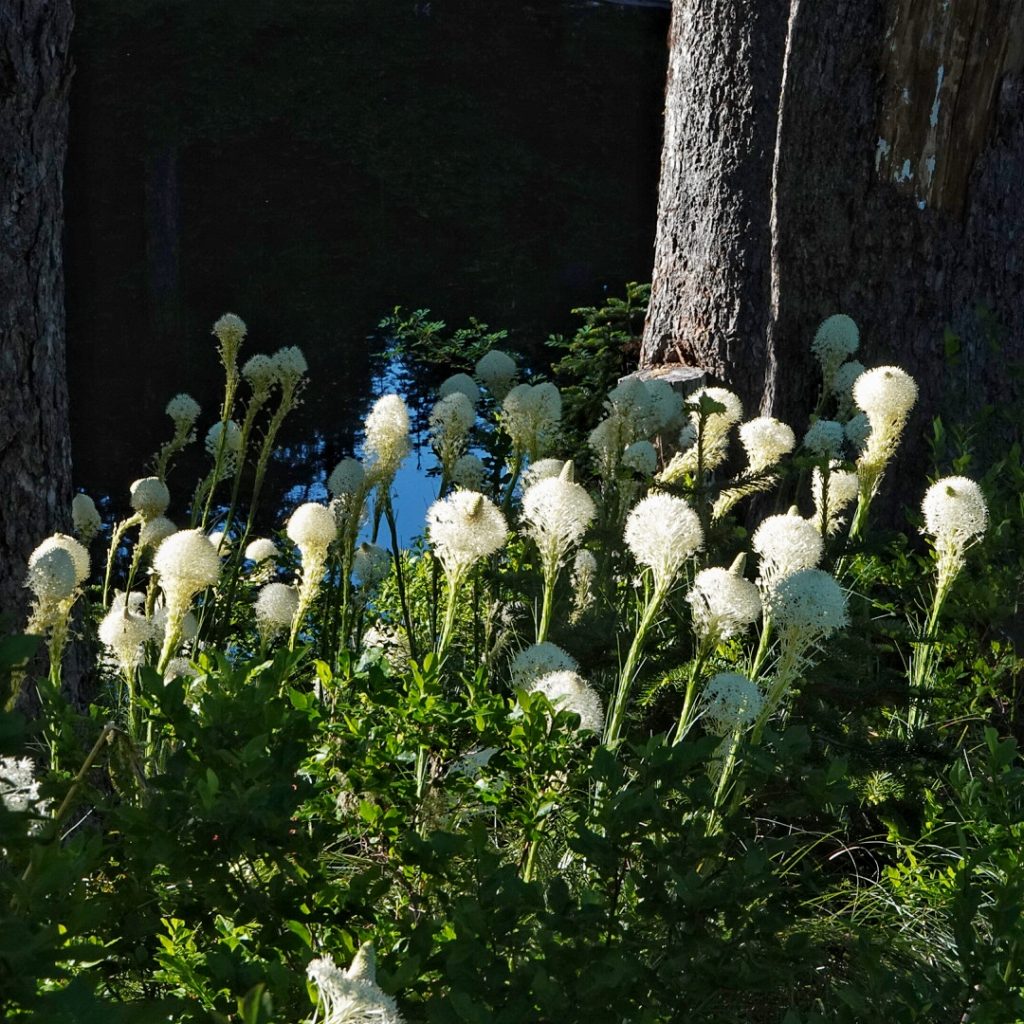
This distinctive member of the family Melaniaceae (corn lily) can be very common in subalpine settings, it’s tall, stalked flowering spike seeming to dominate the landscape. For me this plant is virtually the symbol of being in the mountains, and I always feel a lift when I spot the first ones. It apparently goes by many common names including basketgrass, turkeybeard, elkgrass, soapgrass, quip-quip, pine lily, and many others, but the only one I’ve ever heard spoken is beargrass. That name comes from the fact that bears fresh from hibernation often gorge on the soft, stalkless, early spring clumps, while waiting for other food sources to emerge.
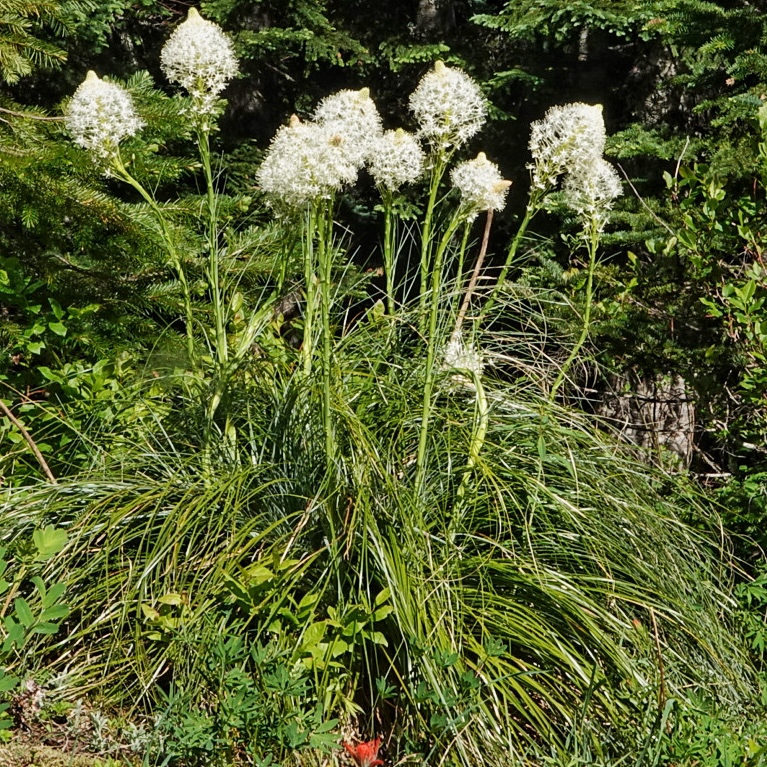
Beargrass has an extensive rhizome system, and new clumps form at the various nodes (meristems). Individual clumps may take 5-7 years before conditions are right for flowering, and once it has fruited that clump dies. Beargrass has evolved an interesting means of (mostly) preventing self-fertilization, a necessity in a system with so many flowers hanging directly above each other. It seems that the styles (female) remain closed and upright until the anthers (male) have finished pollen production and dehisced (dried out and shrunk). Only then do they recurve and expose the stigmatic ridge where fertilization takes place, so that it is primarily pollinator introduced pollen that can access the egg.
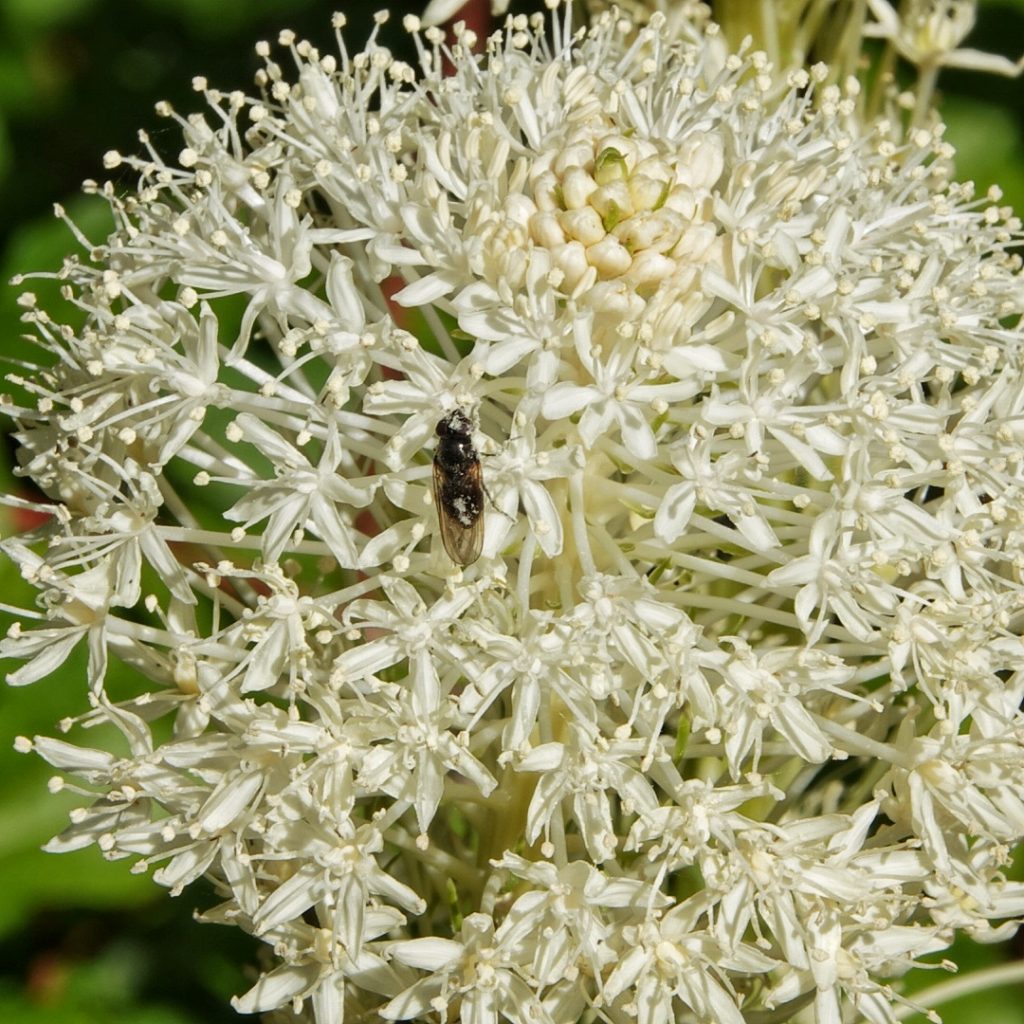
Xerophyllum tenax has been utilized by indigenous cultures for centuries. The leaves were braided and used for ornamentation of clothing and as jewelry, and are prized for basket weaving because of their suppleness and strength. A skilled weaver can construct a waterproof container from them. The roots were roasted for food, as were the seed pods. The roots were also used in various preparations to heal wounds and stop bleeding.
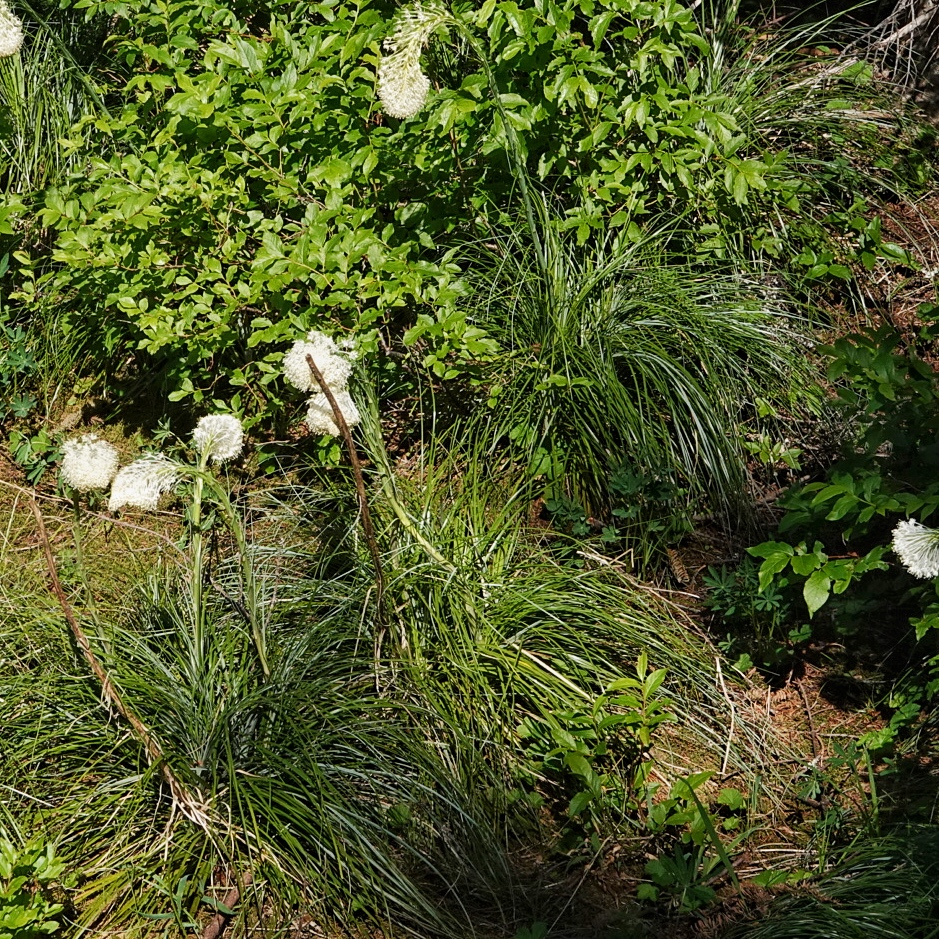
Description-Perennial; large clump with evergreen, grass like leaves growing from a thick rhizome; single, unbranched, leafy stalk up to 5’ tall, topped by a wide, cone shaped, progressively flowering racemose inflorescence that can be up to 20” long.
Similar species-Once it is extending its flowering stalk there is nothing that this can be confused with; before flowering the leaves might be confused with something in the grasses or sedges, but the sclerified foliage is distinct.
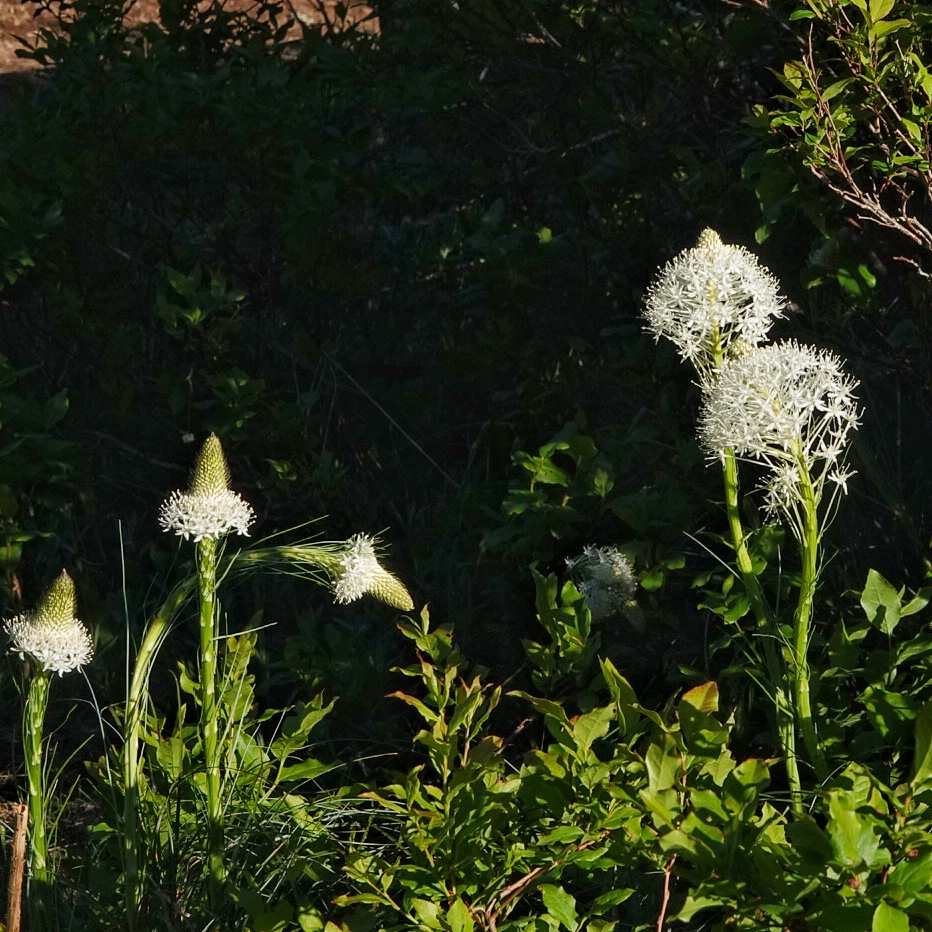
Habitat– Rocky slopes, dry ridges, open coniferous and mixed forests, and clearings in montane and sub-montane environments from sea level on the Olympic Peninsula to subalpine elevations elsewhere.
Range-Native to western North America; found in the Cascades, Olympics, Coast Range, Rockies, and Sikiyous mountains, but seemingly absent from the Wallowas, Blues, Ochocos, and Steens mountains.
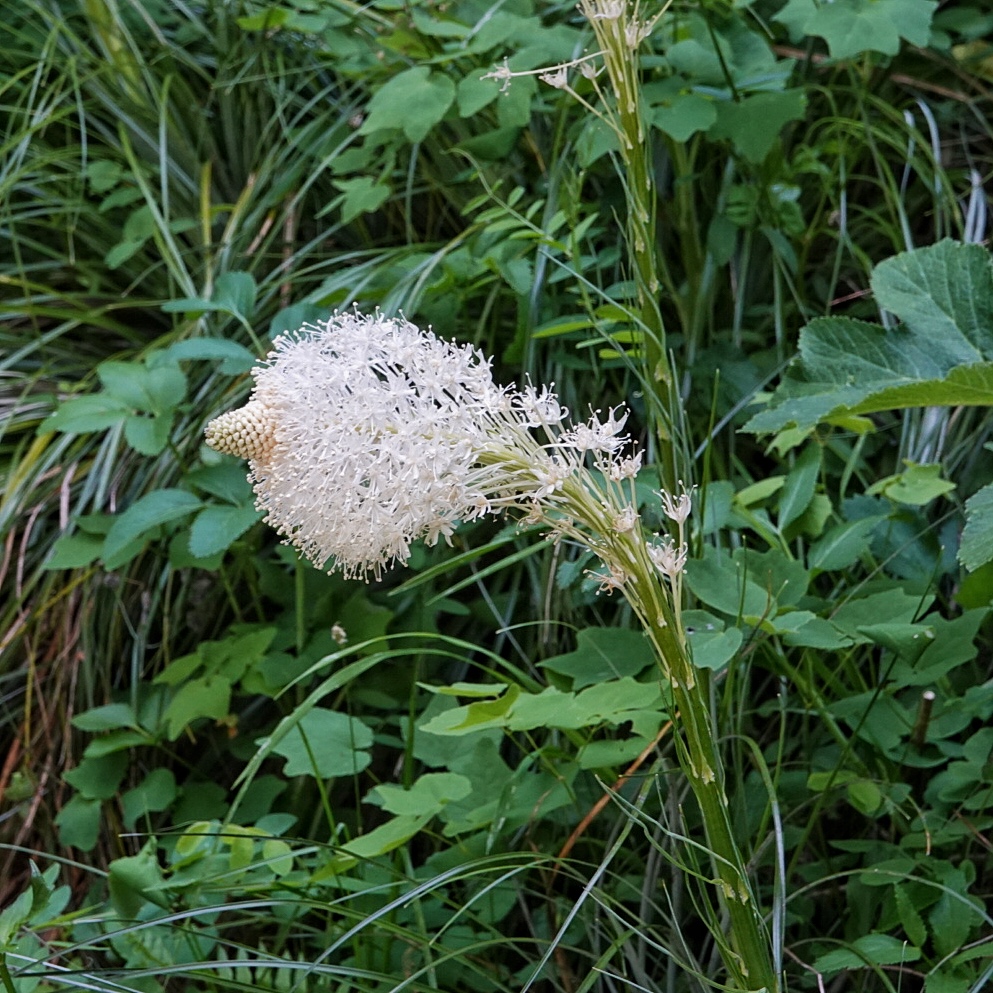
Reproductive timing-Blooms May to August
Eaten by-Bears eat the leaf bases in the spring, and deer and elk browse the flowers and foliage; larval host for the leaf beetle Megalostomis subfasciata; the inflorescence doesn’t produce nectar, but it is visited by pollen feeders such as syrphid flies, Cosmosalia and Epicauta spp. beetles, and small bees.
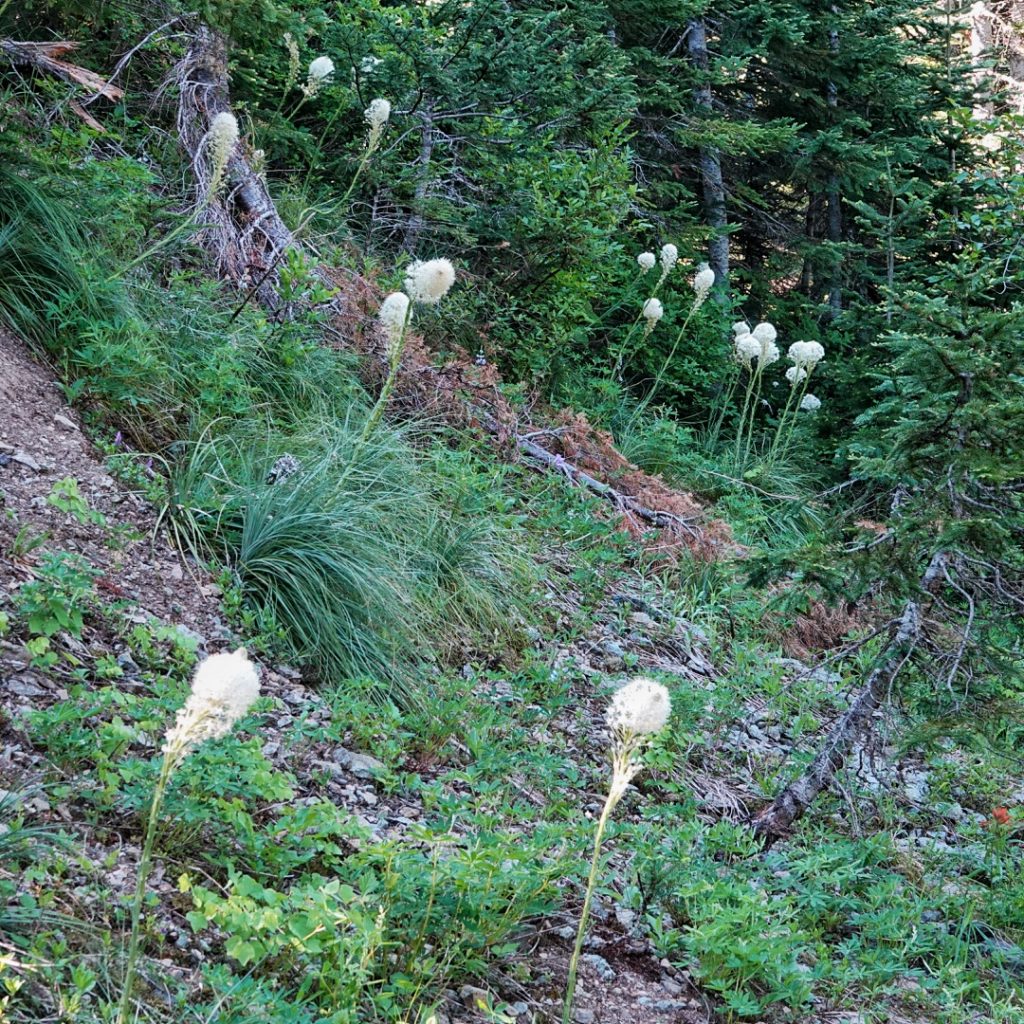
Etymology of names– Xerophyllum is from the Greek for ‘dry leaves’, and alludes to the dry, scaly, sclerified foliage. The specific epithet tenax is from the Latin for ‘steadfast/tough’, and references it’s usefulness as a basket weaving material.
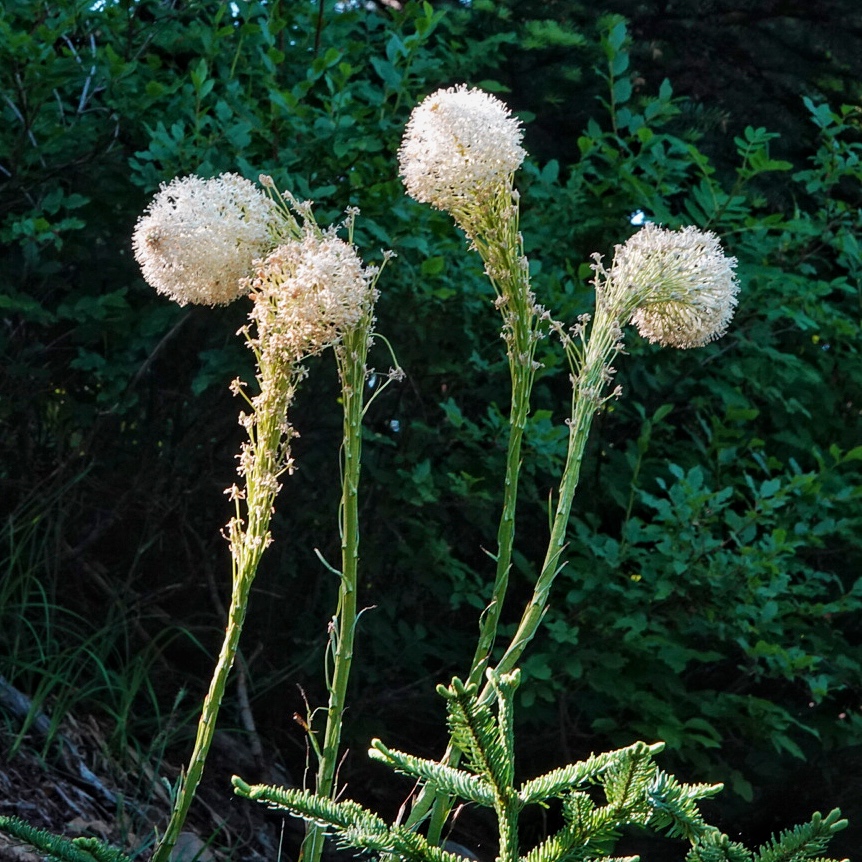
https://www.fs.fed.us/pnw/pubs/pnw_gtr864.pdf
https://www.wnps.org/native-plant-directory/75-xerophyllum-tenax
http://biology.burke.washington.edu/herbarium/imagecollection/taxon.php?Taxon=Xerophyllum%20tenax
https://pfaf.org/user/Plant.aspx?LatinName=Xerophyllum+tenax
https://bsapubs.onlinelibrary.wiley.com/doi/pdfdirect/10.3732/ajb.91.12.2060
https://www.nps.gov/glac/learn/news/media13-41.htm
https://en.m.wikipedia.org/wiki/Sclereid
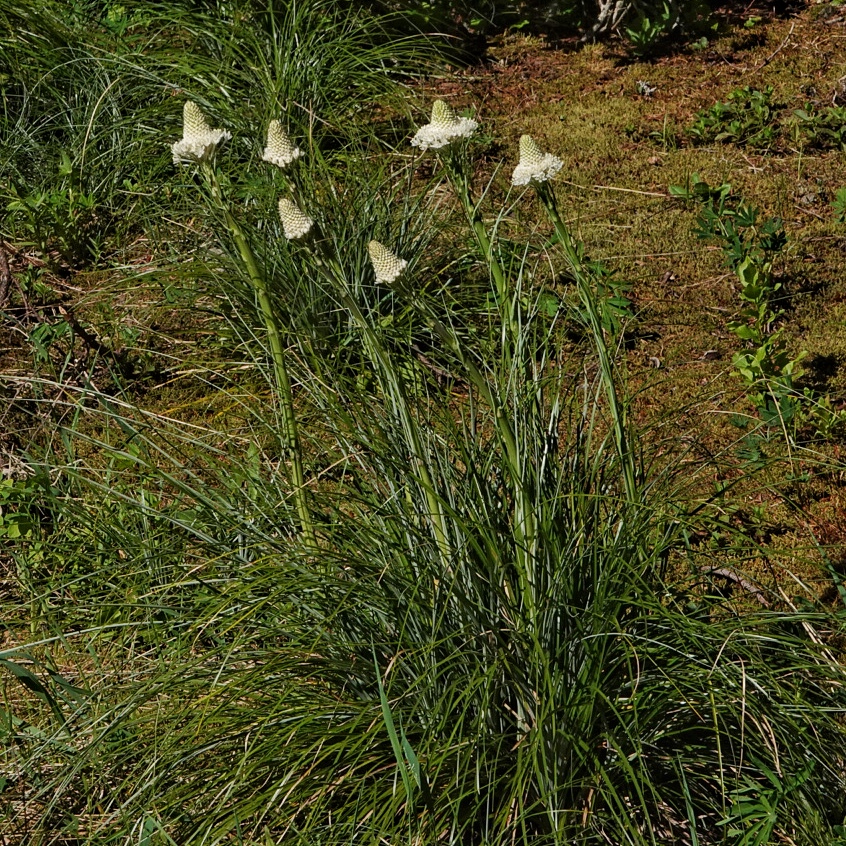
Love your posts! And being an old-fashione Octogenarian – do you consider putting your posts oput as a . . . B O O K . . . ? ? ?
Thy are so great!
Please Do!
Jochen Moehr
Thank you, Jochen! A book probably wouldn’t be feasible, considering that I hope to have 10,000. Though at some point I would like to make it a downloadable and updatable app.